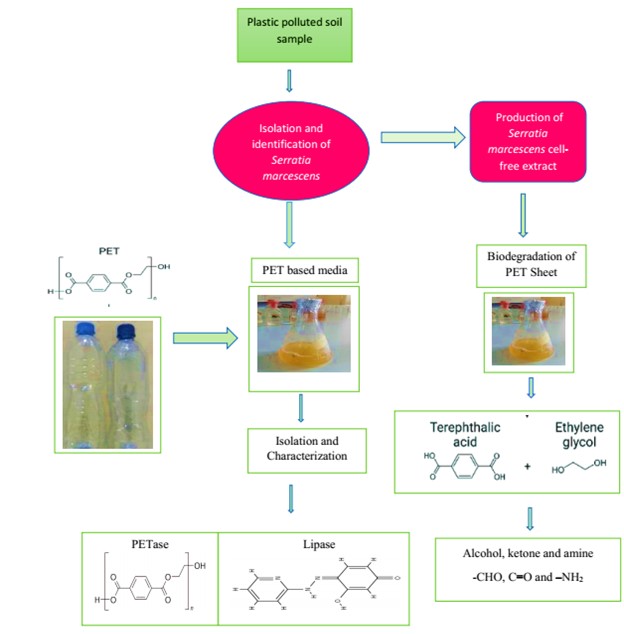Enzyme Activity and Biodegradation Potentials of Serratia marcescens Cell-Free Extract on Polyethylene Terephthalate Sheet
Main Article Content
Abstract
Microbial strains with potential hydrolytic enzymes are excellent hosts for the biodegradation of polyethylene terephthalate (PET). However, knowledge of the best working conditions for enzymatic actions is essential to suggest the most suitable condition for the bio-transformation process. In this research, PETase and lipase produced by Serratia marcescens under PET exposure were screened and their physicochemical properties were evaluated. Furthermore, the biodegradation efficiency of the cell-free extract produced from S. marcescens on a PET sheet was studied via scanning electron microscope (SEM) and Fourier transform infrared spectrophotometer (FTIR). The result showed maximum production of PETase activity (8.80 U mL-1) and lipase activity (7.48 U mL-1) by S. marcescens on the sixteenth and tenth day of cultivation. The physicochemical study showed that they were active and stable over a wide range of pH (5.0–11.0) and temperature (30 °C–80 °C), with optimum PETase activity at pH 7.0 and 50 °C. At the same time, lipase had optimum activity at pH 9.0 and 60 °C. PETase activity was inhibited by Ca2+ and Cu2+ and significantly enhanced when exposed to Mg2+ and Ba2+ while lipase activity was significantly enhanced with the addition of Ca2+ and Mg2+. However, EDTA chelated the activities of both enzymes. The SEM profile of the PET sheet surface after enzymatic degradation revealed the presence of cracks while FTIR spectra of the PET sheet showed the creation, disappearance, and shiftings of peaks at different wavelengths when compared with control. In conclusion, this study shows the capacity of S. marcescens to produce PETase and lipase and reveals the cell-free extract to hold great prospects that can be utilized for industrial and domestic remediation of PET wastes to achieve a cleaner environment.
Article Details

This work is licensed under a Creative Commons Attribution-NonCommercial 4.0 International License.
Published articles are under the copyright of the Applied Environmental Research effective when the article is accepted for publication thus granting Applied Environmental Research all rights for the work so that both parties may be protected from the consequences of unauthorized use. Partially or totally publication of an article elsewhere is possible only after the consent from the editors.

